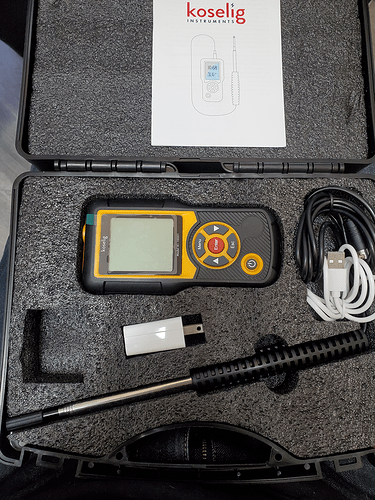How-To: Correctly Measure Canopy Air Velocity
Canopy air velocity is the most important environmental variable next to PPFD. Yet, it is rarely discussed by growers and even more seldom measured. Canopy air velocity affects plants in many ways, including the rate of transpiration and photosynthesis, water use efficiency, nutrient uptake (by mass flow), leaf temperature and VPD, CO2 fixation, and more.
Leaves are plants’ cooling systems, so the plants cannot effectively cool down when canopy air velocity is too low. Also, the boundary layer around leaves is stagnant under low air velocity, leading to reduced plant growth and health with increased disease incidence.
Enter the hotwire anemomometer! Ask any HVAC tech, and they will probably have one with them in the field. Hotwire anemometers are the only way to measure air velocity accurately with precision. You can put vane wheel anemometers away; they are not useful for measuring canopy air velocity.
You want between 1 m/s to 3 m/s air velocity at the canopy and >1 m/s intracnopy. That’s the spec you want to meet through trial-and-error at home or require from your HVAC engineer if you’re designing/upgrading a facility.
Koselig Instruments $150 hotwire anemometer as a tremendous entry-level sensor. It gets the job done. I wouldn’t recommend anything cheaper, but there are better sensors for more money.
Food for thought:
–If you use HPS, without substantial air velocity your leaves are probably >4-6’F higher than air temperature. And even hotter under high PPFD and water stress…bad grower! (I say in my best “bad dog” voice, j/k)
–If you use LED, without substantial air velocity your leaves are probably >2-4’F higher than air temperature, and even greater under high PPFD and water stress,
The next threads in my How-To series will describe the correct use of an IR gun for air temperature measurement and the proper way to calculate VPD.

